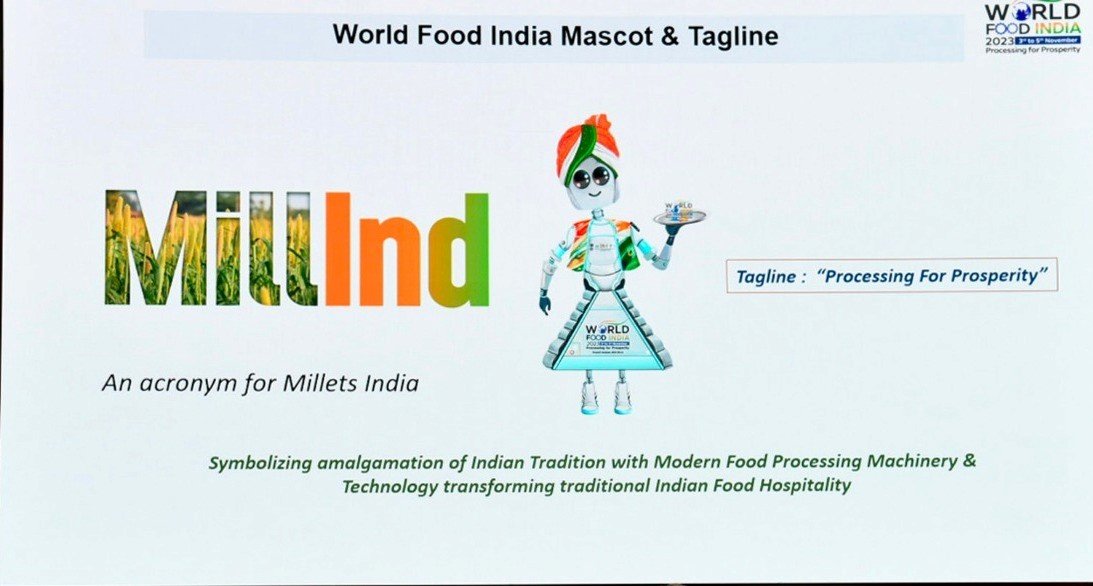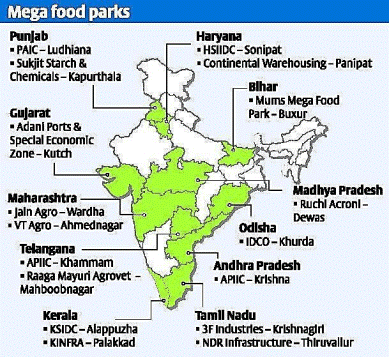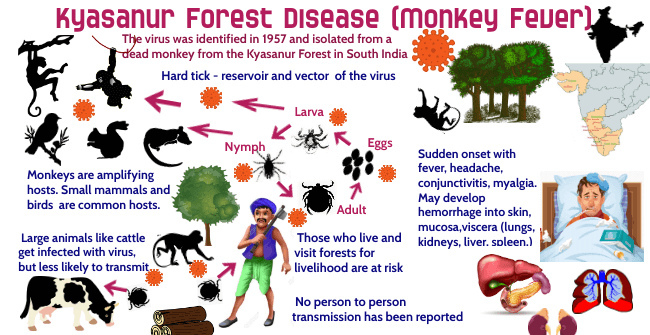World Food India
World Food India
About:
- World Food India 2023 is a gateway to the Indian Food Economy, facilitating partnerships between Indian and foreign investors.
- It will be a one-of-a-kind gathering of manufacturers, producers, food processors, investors, policymakers, and organisations from across the global food ecosystem.

Core Focus Areas:
- Shree Anna (Millets): Harnessing India’s Superfood for Global Impact
- Millets emerge as a key solution for global challenges like climate change, population growth, and malnutrition, contributing to food and nutrition security.
- The United Nations has designated 2023 as the International Year of Millets (IYM 2023).
- Exponential Food Processing: Establishing India as the Global Epicenter
- In pursuit of this goal, India aims to fortify the elements that can bolster and expedite its food processing industry.
- A crucial element involves enhancing support for Agri-Food Value Chains through financial mechanisms, ensuring ample and affordable credit accessibility to the food processing sector, particularly to micro, small, and medium enterprises (MSMEs)

Status of Food Processing in India:
Food Processing Overview:
- The food processing sector stands as a pivotal element within the broader food supply chain.
- It involves the conversion of raw agricultural and livestock products into processed and value-added food items suitable for consumption.
- Encompassing diverse activities, technologies, and processes, the sector aims to enhance the safety, convenience, shelf life, flavour, and nutritional content of food products.
Food Processing Sector in India:
- India’s food processing sector makes a significant contribution to the nation’s economy, representing 13% of exports and 6% of industrial investment.
- Drawing substantial foreign direct investments (FDI), the sector received USD 4.18 billion from 2014 to 2020, showcasing confidence in its future trajectory.
- Predicted to create around 9 million jobs by 2024, India is poised to emerge as the world’s fifth-largest consumer of food and food technology by 2030, quadrupling household consumption.
- These indicators underscore the sector’s substantial potential for growth
Government Initiatives in the Food Processing Sector:
- Recognition of food and agro-based processing units along with cold chains as agricultural activities under Priority Sector Lending (PSL) norms in April 2015.
- Transition from a product-specific approval process to an ingredient and additive-based approval system by the Food Safety and Standards Authority of India (FSSAI) through notifications in 2016, aimed at facilitating ease of doing business.
- Approval of 100% Foreign Direct Investment (FDI) under the automatic route for the food processing sector.
- Establishment of a Special Food Processing Fund amounting to Rs. 2000 crore in collaboration with the National Bank for Agriculture and Rural Development (NABARD).
Other Government Initiatives:
- Pradhan Mantri Kisan Sampada Yojana
- Pradhan Mantri Formalisation of Micro Food Processing Enterprises Scheme
- Production Linked Incentive (PLI) Scheme for the food processing industry.
Kyasanur Forest Disease
About:
- Kyasanur Forest Disease (KFD) is a tick-borne viral illness endemic to Karnataka. The disease primarily affects the Western Ghats region, including Karnataka, Maharashtra, Kerala, Tamil Nadu, and Goa.
- Morbidity is significant, with an acute and convalescent phase lasting four weeks; complications may include haemorrhage or neurological issues. Mortality rate is reported to be about 2–10%.
- Despite vaccination efforts, KFD positivity is expanding across the entire Western Ghats region. The study emphasizes the need for newer potential vaccines and the challenges in implementing control measures.
- Comparative analysis shows an insignificant difference in KFDV infection among vaccinated and unvaccinated populations
- Kyasanur Forest Disease (KFD) is a serious and potentially fatal viral infection that affects humans and animals.
- It is caused by the Kyasanur Forest Disease Virus (KFDV), a member of the Flavivirus family that also includes dengue, yellow fever, and Zika viruses.
- KFDV was first identified in 1957 in Karnataka, after an outbreak of hemorrhagic fever among monkeys and humans in the Kyasanur Forest area. Since then, KFD has been reported in several districts of Karnataka, as well as neighbouring states of Kerala, Tamil Nadu, Goa, and Maharashtra.
What are the symptoms of KFD?
- The incubation period of KFD is 3 to 8 days, meaning that symptoms usually appear within a week after exposure to the virus. The initial symptoms include High fever, Headache, Chills, Muscle pain, Vomiting, and Diarrhea.
- About 10 to 20% of patients may develop bleeding problems, such as nosebleeds, gum bleeding, blood in urine or stool, or internal bleeding. This can lead to shock, organ failure, and death. The case fatality rate of KFD is estimated to be around 2 to 10%.
- Some patients may experience a second phase of illness after a brief recovery period. This phase is characterized by neurological symptoms, such as severe headache, mental confusion, Tremors, Vision loss, and Coma.
- The neurological phase can last for several weeks or months and may result in permanent disability or death

How the Transmission occurs:
- KFD is mainly transmitted by the bite of infected hard ticks (Haemaphysalis spinigera), which are found in forested areas where rodents, shrews, and monkeys are common. These animals act as reservoir hosts for KFDV, meaning they can carry the virus without showing symptoms.
- Monkeys, especially the bonnet macaque and the grey langur, are also amplifying hosts, meaning they can develop high levels of the virus in their blood and infect more ticks.
- Humans can get infected by coming into contact with infected ticks or animals, either directly or through contaminated materials.
- There is no evidence of human-to-human transmission of KFD.
How is KFD diagnosed and treated:
- KFD can be diagnosed by laboratory tests that detect the presence of the virus or its antibodies in the blood or tissues of the patient. These tests include:
- Polymerase chain reaction (PCR), which amplifies and identifies the genetic material of the virus.
- Enzyme-linked immunosorbent assay (ELISA), which measures the level of antibodies against the virus.
- Virus isolation, which grows the virus in cell culture or animal models.
- There is a vaccine available for KFD that has been used in endemic areas of India since 1990. The vaccine consists of formalin-inactivated KFDV and is given in three doses at intervals of one month. A booster dose is recommended every six months for people who are at high risk of exposure. The vaccine is reported to be safe and effective in preventing KFD.
- There is no specific antiviral treatment for KFD. Patients are given supportive care, such as fluids, electrolytes, blood transfusions, and oxygen therapy. Antibiotics may be given to prevent secondary bacterial infections.
How can KFD be prevented:
- The best way to prevent KFD is to avoid exposure to infected ticks and animals.
- Wearing protective clothing, such as long sleeves, pants, boots, and hats, when visiting forested areas.
- Applying insect repellents containing DEET or permethrin on clothing and skin.
- Checking for and removing any ticks from the body after leaving forested areas.
- Avoid contact with sick or dead animals or their tissues.
- Disinfecting any tools or equipment that may have come into contact with infected animals.
- Reporting any cases of monkey deaths or illness to local health authorities
World Economic Forum
World Economic Forum (WEF) is a non-profit organisation that was founded in January 1971. WEF is based in Cologny-Geneva, Switzerland, and was formed with an initiative to improve the states of the world. This organisation was formerly known as the European Management Forum
About the Annual Meet:
- The 53rd edition of the World Economic Forum’s Annual Meeting brought together 2,700 leaders from 130 countries, including 52 heads of state/government.
- The theme for this year was ‘Cooperation in a Fragmented World,’ set against the backdrop of the Russia-Ukraine war, climate change, and evolving global political scenarios.
New Initiatives Launched:
- Giving to Amplify Earth Action (GAEA): WEF, with support from over 45 partners, initiated this global effort to fund new and existing public, private, and philanthropic partnerships (PPPPs) aiming to unlock $3 trillion in financing annually. The goal is to achieve net-zero emissions, reverse nature loss, and restore biodiversity by 2050.
- Coalition of Trade Ministers on Climate: This coalition seeks to enhance international cooperation on climate, trade, and sustainable development. Co-led by the trade ministers of Ecuador, the European Union, Kenya, and New Zealand, it includes ministers from 27 jurisdictions.
- Global Collaboration Village: WEF, in collaboration with Accenture and Microsoft, launched the first global, purpose-driven metaverse platform—Global Collaboration Village. It provides a virtual space to strengthen international cooperation.
- Coalition for Epidemic Preparedness and Innovations (CEPI): CEPI, established in 2017, has set a new 100-day goal for pandemic response. It was launched by the governments of Norway and India, the Bill & Melinda Gates Foundation, and WEF to accelerate the development of vaccines and countermeasures against pandemics. CEPI is headquartered in Oslo, Norway.
India at Davos 2023:
- India is projected to become the third $10 trillion economy by 2035, according to the Center for Economics and Business Research (CEBR).
- Global leaders commended India’s prowess in digital and physical infrastructure and its ability to attract global investments. However, they emphasized the need for reforms in land and labor markets.
- WEF and the Maharashtra Institution for Transformation (MITRA) entered into a partnership to collaborate on the urban transformation agenda.
- WEF launched its first thematic center on healthcare and life sciences in Telangana.
- Telangana signed an agreement with Allox Advance Materials Pvt Ltd to establish a Lithium Iron Phosphate (C-LFP) active battery material production unit.
Other Key Takeaways:
- Global Economic Outlook: Business leaders expressed optimism about the economy, particularly in the US and the European Union. However, central banks emphasized lingering concerns and pledged to maintain high-interest rates to combat inflation.
- Reopening in China: China’s decision to end its Zero-Covid Policy and reopen businesses contributed to a positive outlook, though it may lead to increased energy consumption and higher energy prices.
- Friendshoring: The World Trade Organization warned against “friendshoring,” cautioning economies about relocating supply chains to countries with low political disruption risk.
- Ukraine-Russia War: Ukraine sought increased military and financial aid for its war against Russia and post-war reconstruction.
- Climate Change: There was a consensus on the importance of green energy and the need for increased funding to combat climate change.
Major reports by WEF:
- Energy Transition Index
- Global Competitiveness Report
- Global IT Report (WEF along with INSEAD, and Cornell University publishes this report),
- Global Gender Gap Report
- Global Risk Report
- Global Travel and Tourism Report
